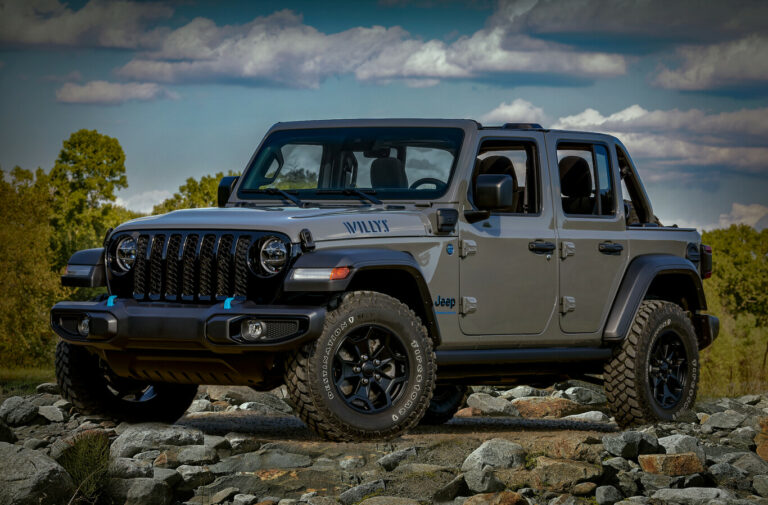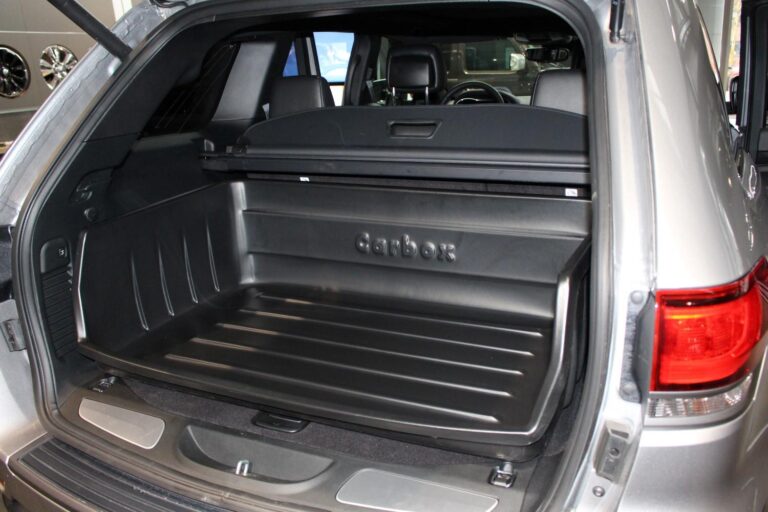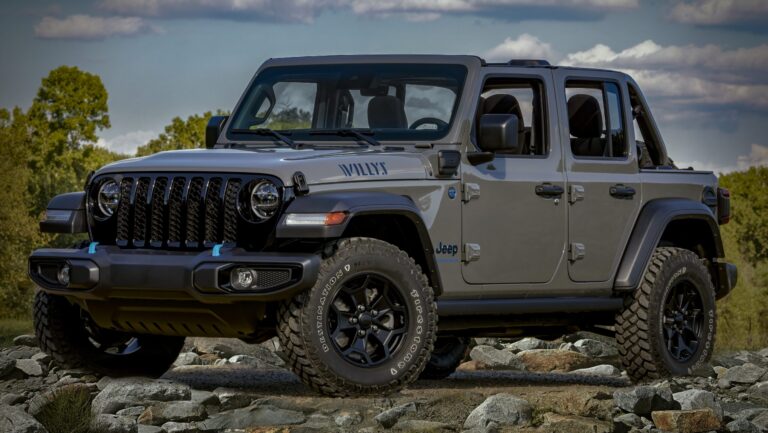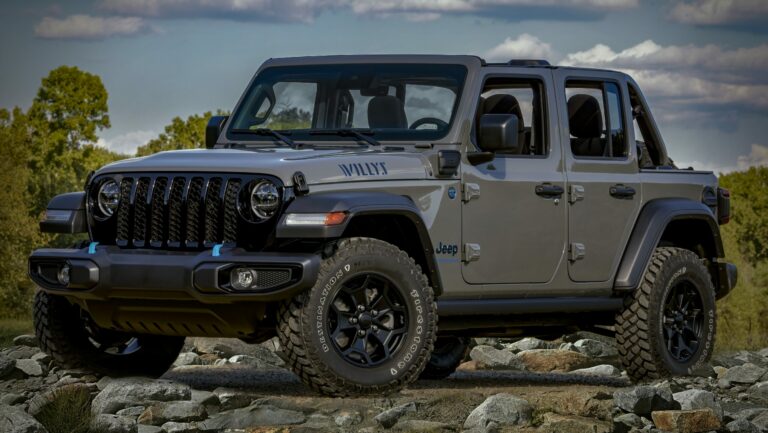1991 Jeep Wagoneer For Sale: A Comprehensive Buyer’s Guide to an Enduring Icon
1991 Jeep Wagoneer For Sale: A Comprehensive Buyer’s Guide to an Enduring Icon jeeps.truckstrend.com
The year 1991 marked the end of an era for one of America’s most beloved and enduring automotive legends: the Jeep Grand Wagoneer. As the final model year of the original SJ platform, the 1991 Grand Wagoneer represents the culmination of a design that had remarkably remained in production, largely unchanged, since 1963. Today, finding a 1991 Jeep Wagoneer for sale isn’t just about acquiring a vehicle; it’s about investing in a piece of automotive history, a symbol of American luxury, ruggedness, and a timeless design that continues to capture hearts. This comprehensive guide will delve into everything you need to know about this iconic SUV, from its defining features to practical advice for prospective buyers.
The End of an Era: Why the 1991 Model Year Matters
1991 Jeep Wagoneer For Sale: A Comprehensive Buyer’s Guide to an Enduring Icon
For nearly three decades, the Jeep Grand Wagoneer stood alone as the original luxury SUV, blending the utility of a four-wheel-drive vehicle with the comforts typically found in high-end sedans. The 1991 model year holds particular significance as it was the last production run of this beloved classic before its discontinuation. This makes the 1991 Wagoneer a highly sought-after collector’s item, embodying the final, most refined iteration of the SJ platform.
By 1991, the Grand Wagoneer had received numerous upgrades over its long lifespan, though its fundamental character remained intact. These later models often boast more creature comforts, improved sound deadening, and the benefit of decades of incremental refinements. For many enthusiasts, the 1991 model represents the pinnacle of the original Wagoneer design, making it a prized possession for those who appreciate classic American iron with a touch of wood-paneled charm.
Defining Features and Specifications of the 1991 Jeep Wagoneer
The 1991 Grand Wagoneer offered a distinctive blend of robust capability and surprising luxury for its time. Understanding its core features is crucial for any potential buyer.
- Powertrain: Under the hood, the 1991 Wagoneer was powered by the venerable AMC 360 cubic inch (5.9L) V8 engine, known for its torque and durability. Mated to a Chrysler TorqueFlite 727 three-speed automatic transmission, this combination provided ample power for both highway cruising and off-road excursions. The Selec-Trac NP229 transfer case offered both full-time and part-time four-wheel-drive modes, making it versatile for various driving conditions.
- Exterior Aesthetics: The most iconic feature of the Grand Wagoneer is undoubtedly its exterior "woodgrain" vinyl paneling, accented by chrome trim. This distinctive styling, combined with its boxy, upright silhouette, gave it an unmistakable presence. Other exterior features included roof racks, fog lights, and chrome bumpers, all contributing to its classic, robust appeal.
- Interior Luxuries: Inside, the 1991 Wagoneer aimed for comfort. Standard features included plush leather and corduroy upholstery, power-adjustable front seats, power windows, power door locks, air conditioning, and a tilt steering wheel. The dashboard, while dated by modern standards, was functional and featured a full array of gauges. Rear passengers enjoyed ample legroom and a comfortable bench seat.
- Robust Construction: Built on a full-frame chassis with solid axles front and rear, the Wagoneer was engineered for durability and off-road prowess. This robust construction contributed to its legendary longevity and ability to handle rough terrain, a testament to its Jeep heritage.
Navigating the Market: What to Look For When Buying a 1991 Wagoneer
Acquiring a 1991 Jeep Wagoneer for sale requires a keen eye and a thorough inspection, as even well-maintained examples will show signs of their age. Here are key areas to scrutinize:
- Rust: This is the Wagoneer’s Achilles’ heel. Inspect the frame rails (especially near the rear leaf spring mounts), rocker panels, lower door corners, rear quarter panels (around the wheel wells), and the tailgate. Also check the floorboards, especially under the carpet. Extensive rust can make a vehicle a money pit or beyond repair.
- Mechanical Condition:
- Engine (AMC 360 V8): Look for oil leaks (common but can be addressed), listen for knocking or excessive valvetrain noise. Check for coolant leaks and the condition of hoses and belts.
- Transmission (TorqueFlite 727): Ensure smooth shifts without slipping or harsh engagement. Check the fluid color and level.
- 4WD System (Selec-Trac NP229): Test both full-time and part-time modes. The vacuum lines for the front axle disconnect are prone to leaks, which can prevent 4WD engagement.
- Brakes: Check for spongy pedal feel, pulling, or grinding noises.
- Suspension: Look for sagging (especially the leaf springs), worn bushings, and leaking shocks.

- Electrical System: The Wagoneer’s electrical system can be temperamental. Test all power windows (notorious for failing motors and regulators), power seats, power locks, gauges, air conditioning, heater, and all exterior and interior lights. A non-functional AC system can be costly to repair or convert.
- Interior Condition:
- Upholstery: Inspect the leather and corduroy for rips, tears, excessive wear, and sun damage.
- Headliner: Sagging headliners are common and require professional re-gluing or replacement.
- Dashboard: Check for cracks, especially around the speaker grilles and instrument cluster.
- Wood Trim: Inspect the interior wood trim for cracking or fading.
- Exterior Aesthetics:
- Woodgrain: The vinyl woodgrain can fade, crack, peel, or be damaged. Replacement kits are available but costly and labor-intensive.
- Paint and Chrome: Look for faded paint, clear coat failure, dents, and pitting on the chrome bumpers and trim.
- Glass: Check for cracks or chips in the windshield and other windows.
- Documentation: Request service records, title history, and any information about past accidents or major repairs. A well-documented vehicle suggests a caring owner.

Understanding Valuation and Market Trends
The market for 1991 Jeep Wagoneers is robust and has seen significant appreciation in recent years, especially for well-preserved examples. Prices can vary dramatically based on condition, mileage, originality, and location.
- Concours/Show Quality: These are rare, perfectly restored or exceptionally preserved examples that command top dollar. Every detail is correct, and they often have very low mileage.
- Excellent Driver: A solid, reliable vehicle that looks great and functions perfectly, but might have minor imperfections. It’s ready to be driven and enjoyed regularly.
- Good Driver: A perfectly functional vehicle with some cosmetic flaws, minor mechanical issues that need attention, or signs of wear and tear. Still a very enjoyable classic.
- Project/Parts Car: These vehicles require significant mechanical or body work, often suffering from extensive rust or major non-functional systems. They are typically bought for restoration or for their parts.
Factors influencing price include the level of rust (the less, the higher the value), the originality of components, the completeness of the woodgrain and interior, and whether the AC blows cold. Be wary of "restored" vehicles without proper documentation or clear evidence of the work performed, as a bad restoration can hide underlying issues.
Essential Tips for Prospective Buyers
- Get a Pre-Purchase Inspection (PPI): Unless you are an experienced classic car mechanic, always arrange for a reputable independent mechanic (ideally one familiar with vintage Jeeps) to perform a thorough PPI. This is non-negotiable for identifying hidden issues.
- Test Drive Thoroughly: Drive the Wagoneer at various speeds, including highway speeds. Test the brakes, steering, and all gears, including 4WD. Listen for unusual noises.
- Check All Accessories: Don’t just assume they work. Test every button, switch, and knob.
- Research the Seller: If buying from a private party, ask questions about their ownership history and reasons for selling.
- Join Owner Communities: Online forums and Facebook groups for Grand Wagoneer owners are invaluable resources. You can ask for advice, get feedback on specific vehicles, and even find local experts.
The Ownership Experience: Living with a 1991 Wagoneer
Owning a 1991 Jeep Wagoneer is a unique experience. While they are generally robust, they are also 30-year-old vehicles.
- Maintenance: Routine maintenance is key. The AMC 360 is a relatively simple engine to work on, and many mechanical parts are still available due to their widespread use in other Jeeps and AMC vehicles. However, specific trim pieces, woodgrain panels, and some electrical components can be harder to source and expensive.
- Fuel Economy: Be prepared for dismal fuel economy, typically in the 10-14 MPG range.
- Common Issues: Expect to address issues like power window motors, headliner sag, vacuum leaks, and minor oil drips. These are part of the classic car ownership experience.
- Community: The Grand Wagoneer community is passionate and supportive, offering a wealth of knowledge and resources for parts and repairs.
1991 Jeep Wagoneer Estimated Price Guide
It’s important to note that prices for classic vehicles like the 1991 Jeep Wagoneer are highly fluid and depend significantly on the individual vehicle’s condition, mileage, originality, and market demand. This table provides a general estimate.
| Condition Category | Estimated Price Range (USD) | Description & Key Characteristics |
|---|
Conclusion: Embracing the Enduring Charm
The 1991 Jeep Wagoneer isn’t just an old SUV; it’s a piece of automotive Americana that continues to captivate. Its blend of classic styling, surprising luxury, and rugged capability makes it a unique proposition in today’s collector market. While owning one requires commitment to maintenance and an understanding of its vintage quirks, the rewards are immense. From its unmistakable presence on the road to its comfortable, wood-paneled interior, the Grand Wagoneer offers an experience unlike any other.
For those seeking a tangible connection to automotive history, a vehicle that sparks conversations everywhere it goes, and a truly capable classic, a well-chosen 1991 Jeep Wagoneer for sale could be the perfect addition to your garage. It’s more than a vehicle; it’s a lifestyle statement, a rolling piece of art that promises adventure and nostalgia in equal measure.
Frequently Asked Questions (FAQ) about the 1991 Jeep Wagoneer
Q1: Is the 1991 Jeep Wagoneer a reliable vehicle for daily driving?
A1: While a well-maintained 1991 Wagoneer can be a reliable driver, it’s important to remember it’s a 30-year-old vehicle. Expect more frequent maintenance than a modern car. Many owners use them as weekend cruisers or secondary vehicles rather than primary daily drivers, especially if you prioritize modern comfort and fuel economy.
Q2: What is the typical fuel economy (MPG) for a 1991 Jeep Wagoneer?
A2: Fuel economy is not its strong suit. Expect around 10-14 miles per gallon (MPG) in mixed driving conditions, and potentially less in heavy city traffic. The AMC 360 V8 is a thirsty engine.
Q3: Are parts readily available for the 1991 Jeep Wagoneer?
A3: Mechanical parts (engine, transmission, axles, suspension components) are generally available, as many were shared with other Jeep and AMC vehicles. However, specific body panels, interior trim pieces, original woodgrain, and some electrical components can be difficult and expensive to source, often requiring specialist suppliers or used parts.
Q4: What are the most common problems to look out for when buying?
A4: The most common issues include rust (frame, rockers, tailgate), electrical problems (power windows, gauges), air conditioning system failures, vacuum leaks affecting 4WD, and sagging headliners. Oil leaks from the AMC 360 are also very common.
Q5: What should I expect in terms of maintenance costs?
A5: Maintenance costs can vary widely. If you purchase a well-sorted example, you might only face routine maintenance and minor repairs. However, a project car requiring significant rust repair, engine/transmission rebuilds, or electrical overhauls can quickly run into five figures. Budget for regular fluid changes, tune-ups, and occasional unexpected repairs common with vintage vehicles.
Q6: Can the woodgrain paneling be replaced or repaired?
A6: Yes, the woodgrain paneling can be replaced. Several aftermarket companies offer complete woodgrain decal kits. It’s a labor-intensive process, and professional installation is recommended for a factory-correct appearance. Repairing small sections is often difficult due to fading and matching issues.
Q7: Is the 1991 Wagoneer capable off-road?
A7: Absolutely. With its robust full-frame construction, solid axles, and capable 4×4 system, the Grand Wagoneer was designed for off-road use. While not as agile as smaller modern off-roaders, it can handle challenging terrain surprisingly well. Many owners also enjoy its substantial towing capacity.
Q8: Will the value of a 1991 Jeep Wagoneer continue to appreciate?
A8: The value of well-preserved and restored 1991 Grand Wagoneers has been steadily appreciating over the past decade. As the last of its kind and a true American icon, it’s likely to retain its collector status. However, future appreciation depends on market trends, the overall classic car market, and the condition of the specific vehicle. Buying the best condition you can afford is always the safest bet for investment.







